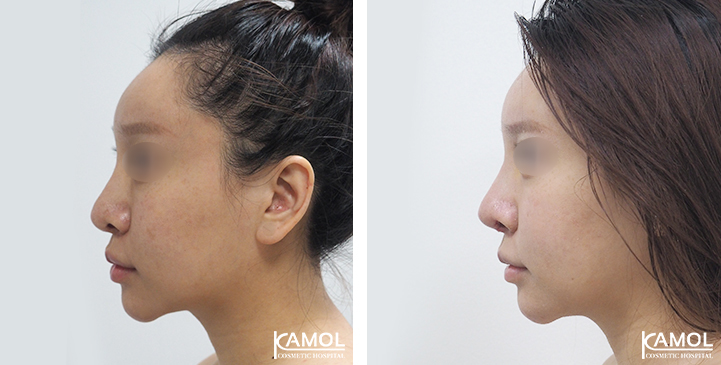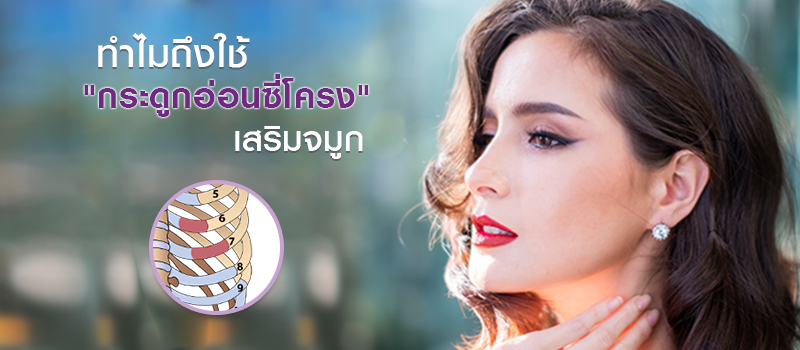
Why is Rib Cartilage used in Rhinoplasty?
Rhinoplasty, also known as a nose job, is a surgical procedure that is performed to alter the shape and size of the nose in order to improve its appearance and function. One of the materials commonly used in rhinoplasty is Rib Cartilage.
Rib cartilage is a strong, flexible and durable material that can be easily shaped and sculpted to create the desired nose shape. It is also a natural material, which means it is well-tolerated by the body and is less likely to cause allergic reactions or other complications. Additionally, rib cartilage has a similar texture and appearance to the cartilage in the nose, making it a great option for achieving a natural-looking result.
Another advantage of using rib cartilage in rhinoplasty is that it is readily available. Unlike other materials such as silicone or Gore-Tex, which are synthetic and have to be imported, rib cartilage can be taken from the patient's own body, minimizing the risk of rejection or infection. This also eliminates the need for additional incisions or procedures to obtain the material.
In conclusion, rib cartilage is a popular choice for rhinoplasty because it is strong, flexible, durable, and natural-looking. Additionally, it is readily available and well-tolerated by the body, making it a safe and effective option for achieving the desired nose shape and overall facial feature enhancement.
Rib Cartilage Rhinoplasty is suitable for:
This type of rhinoplasty is suitable for a variety of patients who have specific aesthetic and functional goals for their nose such as:
- Those with a thin layer of muscle on the nose who want to achieve a very prominent nose. In some cases, these patients may not be able to use other materials such as silicone due to the thinness of the tissue on their nose. In these cases, rib cartilage can be used to create a natural-looking and long-lasting result.
- Those with a flat, short, or upturned nose who want to achieve a very prominent nose with a long tip. Rib cartilage can be used to create a more defined and aesthetically pleasing nose shape that complements the patient's overall facial features.
- To reconstruct damaged or disfigured noses. In cases of injury, trauma, or congenital defects, rib cartilage can be used to rebuild the nose and restore its function and appearance.
In conclusion, rib cartilage rhinoplasty is suitable for a variety of patients with different goals for their nose. It can be used to create a prominent nose, reshape a short or upturned nose, or reconstruct a damaged or disfigured nose. It is a safe and effective option that can provide natural-looking and long-lasting results.
Advantages of Rib Cartilage Rhinoplasty:
- Autologous tissue: The rib cartilage used in this procedure is taken from the patient's own ribcage, reducing the risk of rejection or complications associated with the use of synthetic materials.
- High nose bridge: The use of rib cartilage in rhinoplasty can yield the highest nose bridge, providing a more prominent and aesthetically pleasing nose shape.
- Suitability for specific patients: Rib cartilage rhinoplasty is particularly beneficial for patients who have a thin layer of muscle around the nose and want to achieve a very prominent nose, or those who need to reconstruct their nose due to injury, trauma, or congenital defects.
Disadvantages of Rib Cartilage Rhinoplasty:
- Multiple incisions: The procedure requires two incisions, one to extract the rib cartilage and another to reshape the nose. This can lead to a longer recovery time and increased risk of scarring.
- Open technique: Rib cartilage rhinoplasty is typically performed using an open technique, which involves making an incision on the columella (the strip of tissue separating the nostrils). This may be less appealing for patients who prefer a less invasive approach.
- General anesthesia: In order to extract the rib cartilage, general anesthesia must be administered to the patient. This can increase the risk of complications and may not be suitable for certain patients.
Rib Cartilage Rhinoplasty Surgical Procedures:
This procedure typically involves the following steps:
- General anesthesia: The patient will be given general anesthesia to ensure they are comfortable and pain-free during the procedure.
- Harvesting the rib cartilage: A small incision is made on the patient's chest, typically on the 6th or 7th rib, to extract a piece of rib cartilage. The cartilage is usually around 5cm long, and the incision typically leaves a 4-5cm wound on the chest. The harvested cartilage is then contoured into the desired shape for the patient's nose.
- Incision on the nose: An incision is made on the nose using an open technique, typically on the columella (the strip of tissue separating the nostrils). This allows the surgeon to access the underlying septal cartilage and bone.
- Placement of the implant: The contoured rib cartilage is then placed on the patient's septal cartilage, and adjusted into the desired position to reshape the nose.
- Closure of the wound: The incision on the nose is closed with sutures, and the chest wound is closed with staples or sutures.
It is important to note that rib cartilage rhinoplasty is typically performed on patients with very little muscle around the nose bridge who want to achieve a very prominent nose. Additionally, this procedure can be performed in combination with other techniques such as tip refinement, nostril reduction, and septoplasty.
Kamol Cosmetic Hospital’s rib cartilage rhinoplasty technique
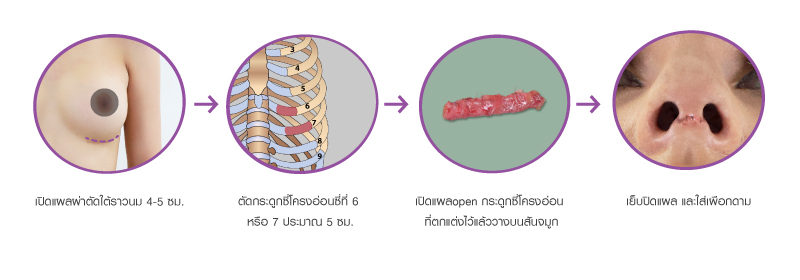
Possible complications from Rib Cartilage Rhinoplasty:
- Damaged or punctured lung tissue: During the harvesting of the rib cartilage, there is a risk of damaging or puncturing lung tissue if the procedure is performed by an inexperienced surgeon.
- Difficulty in contouring: The contouring of rib cartilage can be more challenging than other materials and requires exceptional expertise from the surgeon.
- Multiple incisions and scars: The procedure requires two incisions, one on the chest and one on the nose, which can result in two permanent scars.
- Similar complications to other materials: As with any surgical procedure, there is a risk of complications such as infection, implant displacement, and anesthesia side effects. It is important to discuss these risks with your surgeon before the procedure and to have realistic expectations.
Rib Cartilage Rhinoplasty Reviews:
Before and after images of patient with rib cartilage rhinoplasty
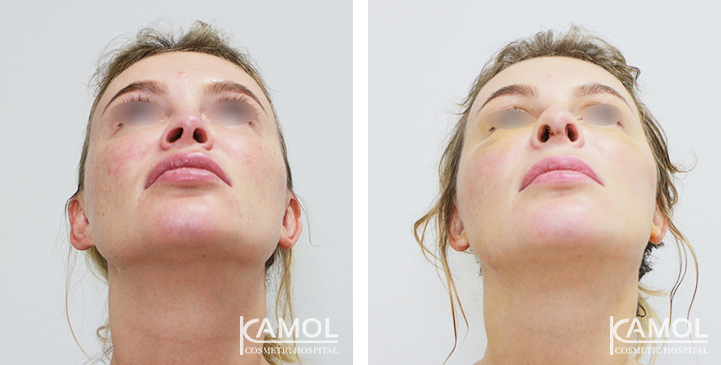
Before and after images of patient with rib cartilage rhinoplasty
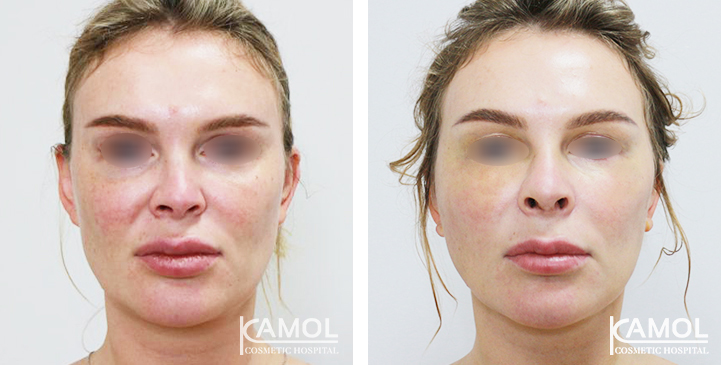
Before and after images of patient with rib cartilage rhinoplasty
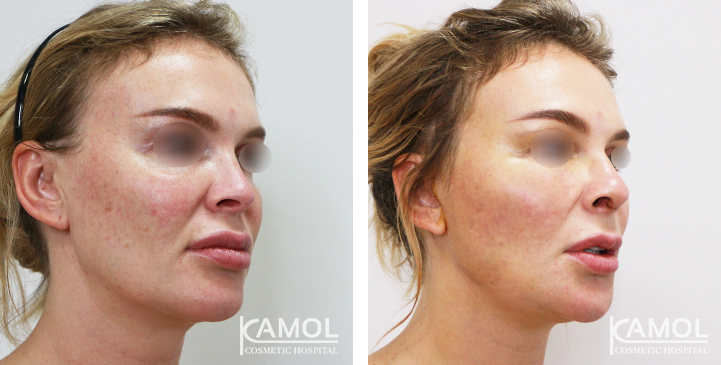
Before and after images of patient with rib cartilage rhinoplasty
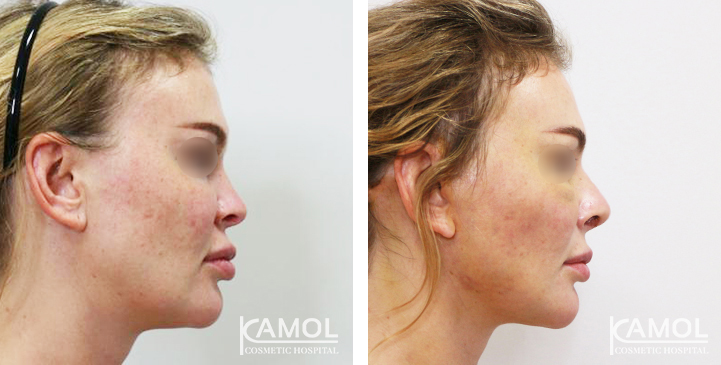
Before and after images of patient with rib cartilage rhinoplasty
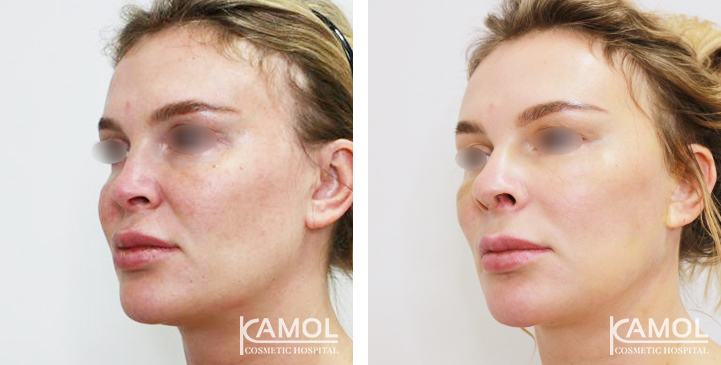
Before and after images of patient with rib cartilage rhinoplasty
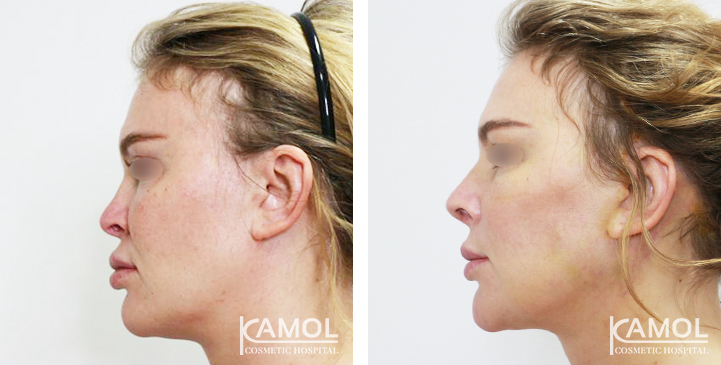
Before and after images of patient with rib cartilage rhinoplasty
Yuri, 38, from Russia
Yuri had her first rhinoplasty in Russia that left her nose bridge crooked and unattractive. She went to Switzerland for a reconstruction surgery, but the results were still unsatisfactory. She had the third surgery at Kamol Cosmetic Hospital.
The reconstruction surgery in this case required rib cartilage to reform the crooked nose bridge. The nose tip was stitched, and an open technique was used. After 7 days, the result is as pictured.
The final result is a natural looking, straight nose bridge with a balanced shape. The nostrils are longer and slanted, and the nose tip is more attractive.
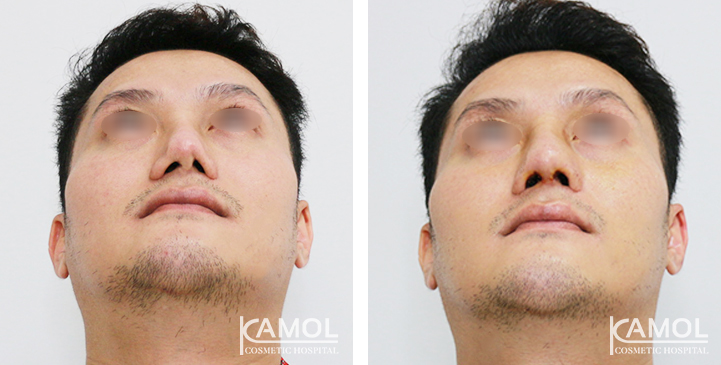
Before and after images of patient with rib cartilage rhinoplasty
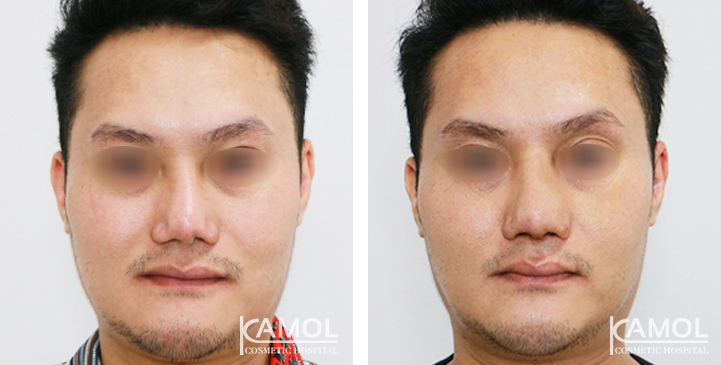
Before and after images of patient with rib cartilage rhinoplasty
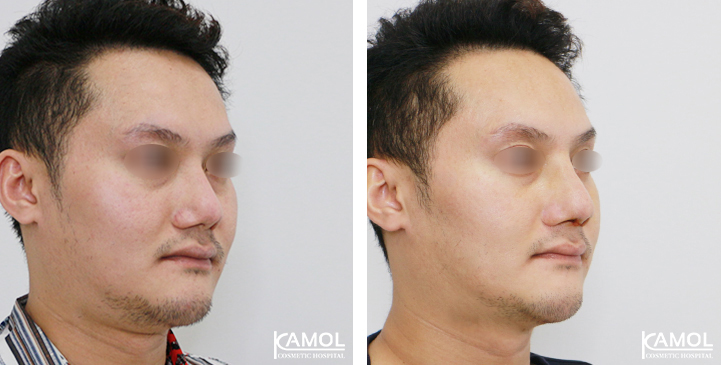
Before and after images of patient with rib cartilage rhinoplasty
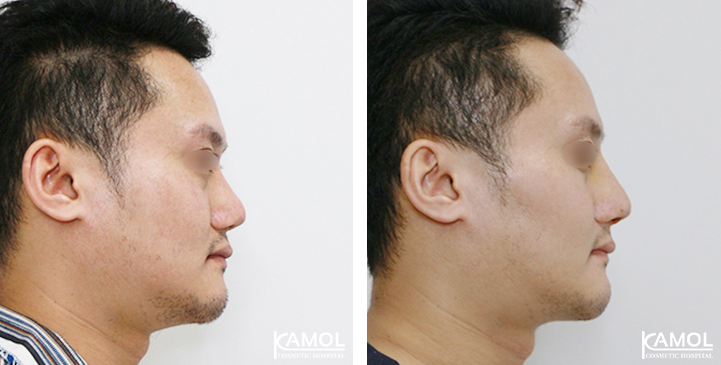
Before and after images of patient with rib cartilage rhinoplasty
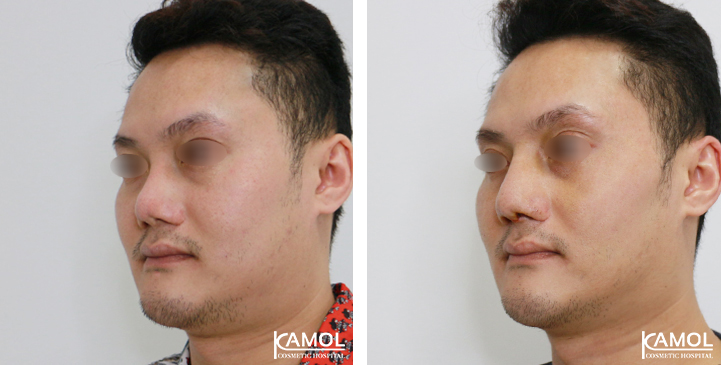
Before and after images of patient with rib cartilage rhinoplasty
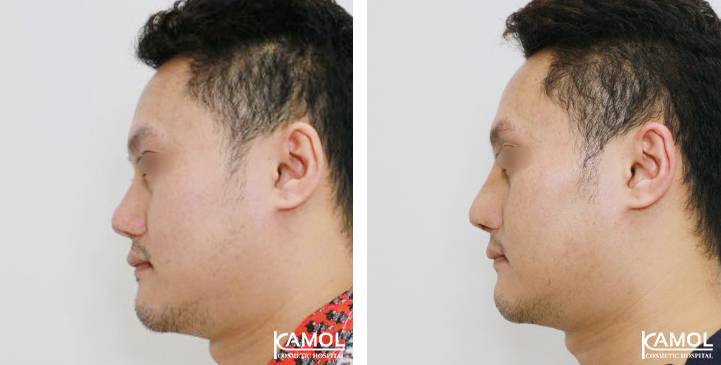
Before and after images of patient with rib cartilage rhinoplasty
This patient underwent rhinoplasty and alar trimming. Unfortunately, an infection developed, and the silicone implant had to be removed, resulting in uneven nose wings and disfigurement of the nostrils. To correct these issues, a reconstruction surgery was performed using rib cartilage. The rib cartilage was used to reshape the disfigured nose tip and nose wings. After 7 days, the patient is pleased with the results, as seen in the post-surgery photograph.
Reconstruction surgery with rib cartilage for Xiaowen
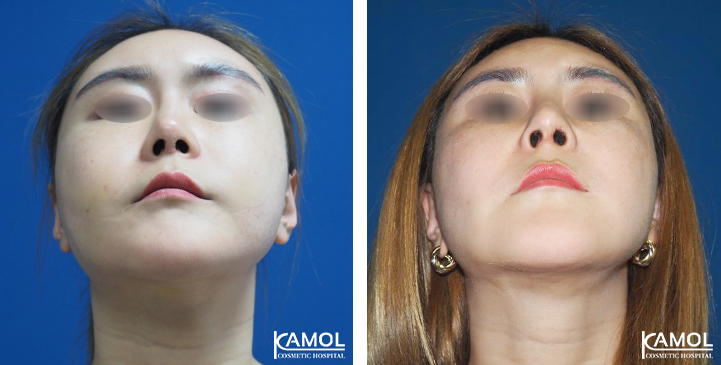
Before & After Rhinoplasty
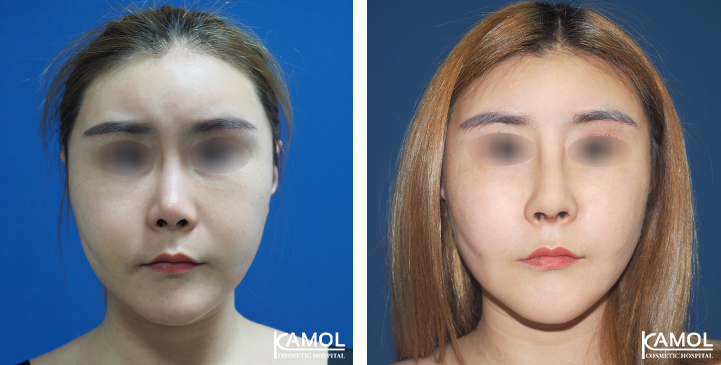
Before & After Rhinoplasty
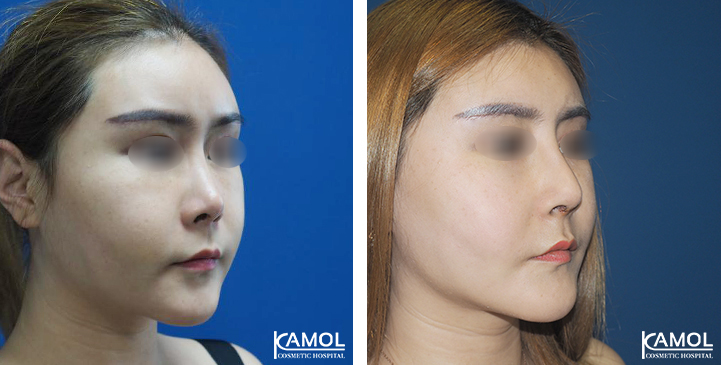
Before & After Rhinoplasty
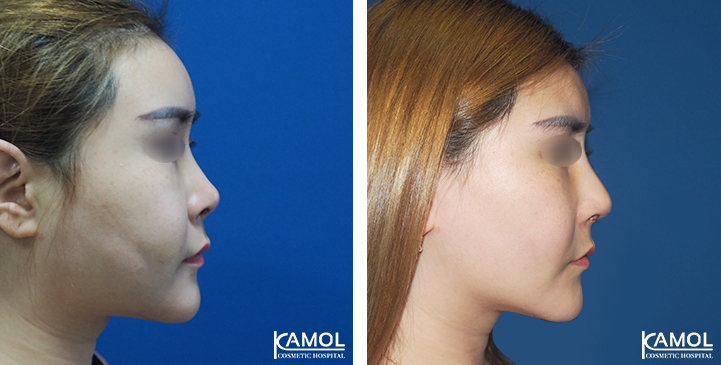
Before & After Rhinoplasty
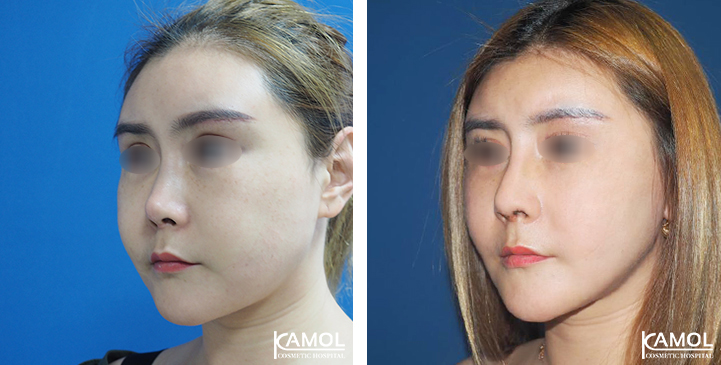
Before & After Rhinoplasty
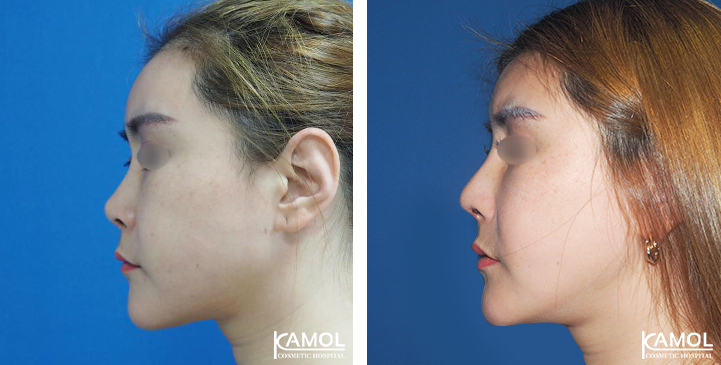
Before & After Rhinoplasty
Xiaowen from China
Originally, Xiaowen had a small and thin nose. However, her nose bridge became slanted after a previous rhinoplasty and she desired a more prominent and straight nose.
To achieve her desired result, a reconstruction surgery was performed using rib cartilage. The rib cartilage was used to create a more prominent nose and sculpt the tip to match her facial frame.
As a result of the surgery, Xiaowen's nose is now more prominent, straight, and beautifully sculpted, matching her desired outcome.
Reconstruction surgery with rib cartilage for Yuxi
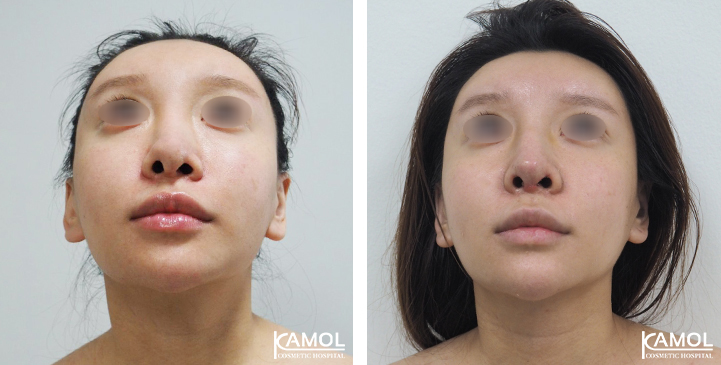
Images show before and after reconstruction surgery with rib cartilage
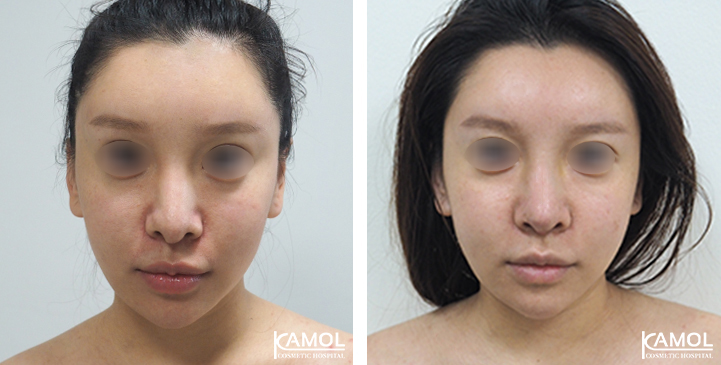
Images show before and after reconstruction surgery with rib cartilage
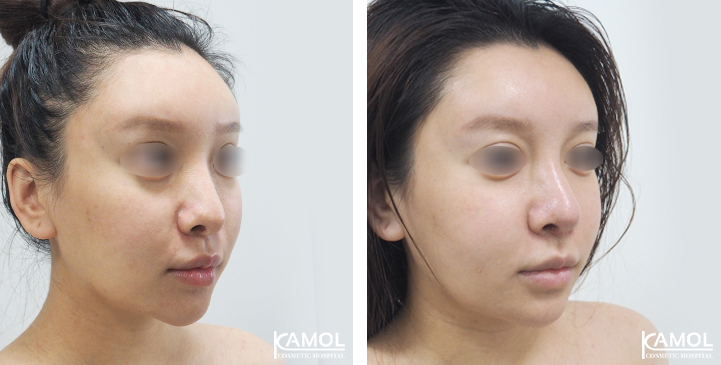
Images show before and after reconstruction surgery with rib cartilage
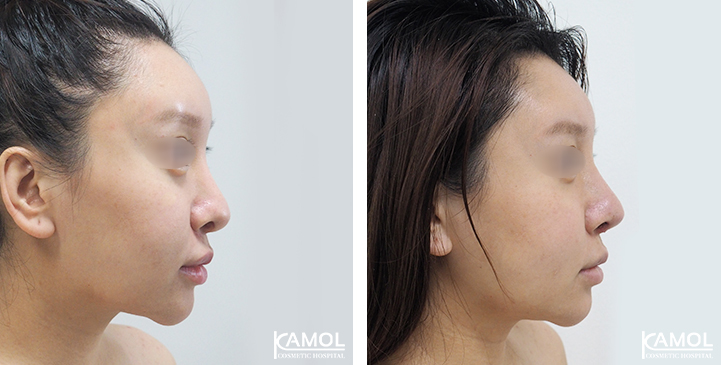
Images show before and after reconstruction surgery with rib cartilage
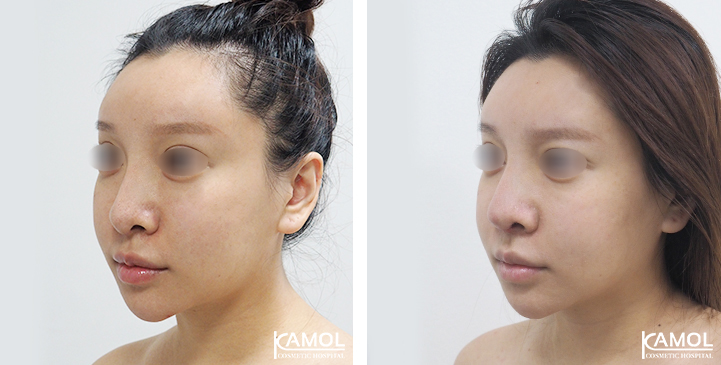
Images show before and after reconstruction surgery with rib cartilage
Yuxi naturally had a flat and wide nose bridge, and even after a previous rhinoplasty, her nose still looked unnatural with uneven and slanted nostrils. She desired to improve the shape of her nose wings and make her nose more prominent.
To achieve her desired result, a reconstruction surgery with rib cartilage was performed. The surgery involved reducing the width of the nose bridge and implanting the contoured rib cartilage to create a more prominent and sculpted nose.


